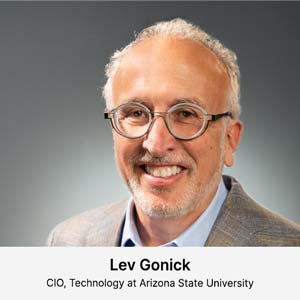 In 1999, Tim Berners-Lee, progenitor of the W3C World Wide Web standard, imagined a world where machines didn’t just store our data – they seamlessly understood it, acted on it, and worked alongside us. He called it the “Semantic Web.” In this space, intelligent agents would seamlessly analyze and act upon the vast amount of data woven through our digital lives. Though the vision inspired for decades, it now reemerges with profound relevance, reborn through the rise of agentic AI.
In 1999, Tim Berners-Lee, progenitor of the W3C World Wide Web standard, imagined a world where machines didn’t just store our data – they seamlessly understood it, acted on it, and worked alongside us. He called it the “Semantic Web.” In this space, intelligent agents would seamlessly analyze and act upon the vast amount of data woven through our digital lives. Though the vision inspired for decades, it now reemerges with profound relevance, reborn through the rise of agentic AI.
“The Semantic Web… has yet to emerge, but when it does, the day-to-day mechanisms of trade, bureaucracy and our daily lives will be handled by machines talking to machines. The “intelligent agents” people have touted for ages will finally materialize.” Tim Berners-Lee, Weaving the Web
For the past quarter-century, we’ve operated in the shadow of that unrealized promise. In the absence of mature, agentic AI, educational technologies have calcified into monolithic, institution-centric applications — bloated systems optimized for compliance and control, not for the learner. APIs offered a glimmer of flexibility, but more often than not, they became brittle bridges between black-box applications that struggled to speak a common language. The result has been data trapped in silos, fragmented workflows, and missed opportunities to support the student holistically.
The decline of the application-centered world
We built our educational technology like we built our campuses — heavy walls, locked doors and a single entrance. Application-centric design served the institution, not the individual. It centralized control, but it also centralized friction. This prevailing architecture of educational software, anchored in application-centric design, has reached its limits. It was a world built for institutions, not individuals. The systems were designed to be closed, managed centrally, and rarely spoke beyond their own boundaries without duct-taped APIs or expensive integrations.
And we called it EdTech. EdTech is the suite of digital tools and systems — LMS, SISs, assessment platforms — that digitized classrooms, expanded access, and scaled education over the past three decades. It was built for an institution-centered world, where stability, compliance, and centralized control were the priorities. These systems did important work, but they’re often siloed, application-bound, and slow to adapt to the changing needs of learners.
This architecture is giving way.
In its place emerges a fluid, interoperable ecosystem driven by API optionality, data federation, machine learning, and natural language understanding. In this new model, value is no longer trapped in isolated workflows. Instead, it flows, intelligently and continuously, with the learner.
And we should call it TechEd. TechEd flips the model. It starts with the learner, designing technology as an open, interoperable network that moves with them across institutions, jobs, and life stages. In TechEd, data is portable and verifiable, knowledge is continuously updated, and AI agents help connect people, resources, and opportunities in real time.
Where EdTech measures completion, TechEd measures capability, enabling learners to own and apply their knowledge in the AI era.
Applications give way to platforms. Workflows give way to agents. Data becomes a river, not a lake.
The foundation of this transformation is Generative Collective Intelligence, human and machine intelligence operating in partnership to make sense of complexity, surface insight, and enable action. What was once institution-centered becomes learner-centered. What was once episodic becomes continuous.
A tale of two learners: Then and now
A day in the life: The first 25 years of the 21st Century
A student logs into a portal. They check their LMS, download a syllabus, read a notification from their financial aid office (on a separate platform), respond to an advisor’s email, and then log into a third-party tutoring app. Their data is scattered. Their history fragmented. Their questions are routed to various offices – oftentimes lost. Their experience, despite all the technology, is defined by latency, confusion and institutional friction.
Their gradebook is the centerpiece of their educational life. It reflects compliance, not creativity. It is a transactional ledger of work passed back and forth between learner and educator. Their transcripts, a PDF abstraction, attempt to summarize their learning through credits, most of which may never transfer. If they leave one institution for another, there’s a strong chance their accumulated learning disappears in the shuffle.
A day in the life: The next 25 years
A learner wakes up. Their AI-powered learning coach welcomes them, drawing their attention to their progress and helping them structure their approach to the day. A notification reminds them of an upcoming interview and suggests reflections to add to their learning portfolio.
Rather than a static gradebook, their portfolio is a dynamic, living record, curated by the student, validated by mentors in both industry and education, and enriched through co-creation with maturing modes of AI. It tells a story through essays, code, music, prototypes, journal reflections, and team collaborations. These artifacts are not “submitted”, they are published, shared, and linked to verifiable learning outcomes.
And when it’s time to move, to a new institution, a new job, or a new goal, their data goes with them, immutable, portable, verifiable, and meaningful.
Beyond the gradebook: Rethinking assessment in the age of AI
The gradebook, a legacy of the industrial model, was the centerpiece of the application era. Neatly organized rows and columns of numeric abstraction, often reduced to a GPA that belied the complexity and richness of a learner’s journey.
In the AI era, assessment must be reimagined.
Reflective practices become foundational. Portfolios evolve from submission portals into ‘living’ evidence of learning in which learners reflect, iterate, and demonstrate learning not only in outputs, but in the process of becoming.
This is not a rejection of standards — it’s the end of pretending that a row of numbers can tell the whole story of a learner. It’s the end of an era of education at scale being framed as a compromise composed of automatically graded assessments and low-risk projects that check the boxes. Rigor and expertise still matters. But in the AI era, rigor lives in reflection, iteration, and the ability to connect learning across contexts. The portfolio becomes both a mirror and a map — showing who the learner is and where they’re capable of going next.
And yes, agentic AI can also be assistive in the evaluation of the portfolio of evidence being shared by students along their journey.
Solving the transfer crisis: From lost credits to learning portability
In the old world, the “coin of the realm” was the credit hour. Yet nearly half of all college credits earned by students who transfer never follow them. The result is squandered effort, disillusionment, and one of the major drivers of the completion crisis, only half of students who start college ever finish. And then, let’s acknowledge the burden of the student debt crisis, especially facing students with some credit but no degree.
The future demands a different currency.
In the new era, verifiable learning data — from microcredentials, portfolios, and traditional coursework — can flow seamlessly across institutional boundaries. Powered by portable, verifiable credentials, learners can triangulate, bundle, and optimize their academic achievements in ways that align with their own goals and timelines.
This new model does more than improve credit transfer. It unlocks a dynamic marketplace of learning and employment, where institutions, learners, and employers interact around trusted, machine-verifiable demonstrations of ability. No more waiting for transcripts. No more lost credits. Just trusted signals of learning, purpose-built for mobility.
What comes next
TechEd is not about replacing faculty or institutions. It’s about augmenting human insight with intelligent infrastructure. It’s about designing systems that anticipate needs, reduce friction, and create space for the full humanity of learners to emerge.
It’s about putting the learner, not the application, at the center.
The era of EdTech is over. What comes next is not a system, but a network. Not an application, but an agent.
It’s time to build, together, for the future of learning.









